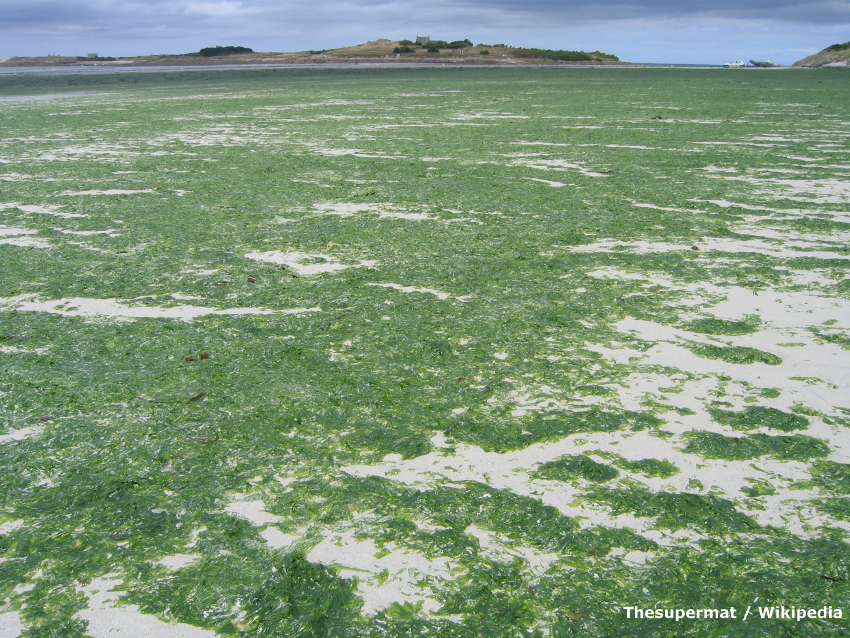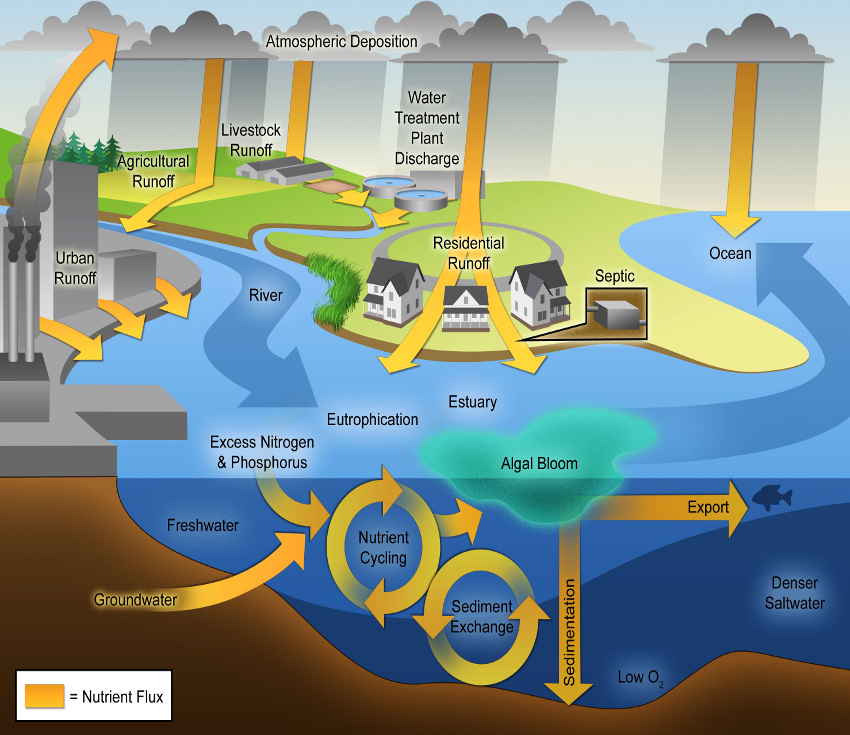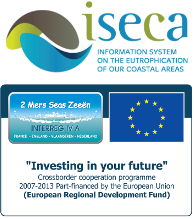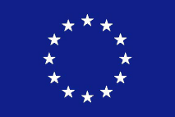Algae grow in the sea feeding on nutrients in the water. Algae grow better when more nutrients (nitrates and phosphates) are present in the water column. A small increase in algal biomass has no adverse effects on the ecosystem and can even lead to an increase of certain fish populations. An overgrowth however can lead to an algal bloom which may disturb the water. The algae may keep out the light and when they eventually die, they are decomposed by bacteria which consume oxygen in this process so that the water may become temporarily anoxic (hypoxia) which may be toxic to aquatic life. An enrichment by or excess of nutrients to the water is called eutrophication and may result in an explosive growth of algae. Depending on the environment (quiet bay or rough seas) and the type of algae (microscopic or macroscopic), a 'bloom' can be observed in different forms: foam or a green tide on the beach.

Foam on the beach due to a Phaeocystis bloom (Le Portel France: 04/2012)
(Photo credit: Nausicaa, Adrien Delater-Julien Legrand)

Green algae on the beach (Nord Finistère, Brittany-France)
(Photo credit: Thesupermat, Wikipedia)
Eutrophication is one of the causes of the deterioration of water quality. In the North Sea and the English Channel, this is mainly due to human activities. Nutrients can have a natural or anthropogenic origin and come from:
- Domestic wastewater
- Industrial waste
- Agriculture (fertilizer use)Atmospheric deposition of nitrogen (livestock and gases)
The overload of nitrogen, phosphorus and other organic material can result in a series of 'side effects'. The main effects of eutrophication are:
- Increasing biomass of phytoplankton resulting in 'algal blooms'.
- Hypoxia (reduced dissolved oxygen content of a body of water).
- An increasing number of incidents of fish kills.
- The water can have a bad taste, color and odeur which has a negative impact on tourism. Governments have to invest more in waste water treatment.
- Decline or loss of species biodiversity (commercially important species may disappear).
- Some phytoplankton species produce toxins that cause severe symptoms such as diarrhea, memory loss, paralysis and in severe causes death.
 |
| Schematic diagram of the different pathways of nutrient deposition into coastal waters and ensuing processes leading to eutrophication (algal blooms) and hypoxia (Photo credit: Dr. Hans W. Paerl) |
Such environmental problems have not only an effect on aquatic life, but can also have a negative impact on the economic activities of the sea (fishing, tourism, recreation ...). Past 20 years, all these issues have been extensively studied and have been the subject of many discussions ... The problem has been addressed in the Water Framework Directive and the European Union within the OSPAR Convention in 1992. Both agreements aim to establish a good management of our rivers and our coastal waters. To achieve these objectives, the parameters of water quality should be regularly monitored and published. Similarly, we must study the socio-economic effects on the areas subject to eutrophication and identify the necessary information to stakeholders (political, agricultural, industrial, tourism ...).
| Need more information? Go to the WIKIPAGE |













